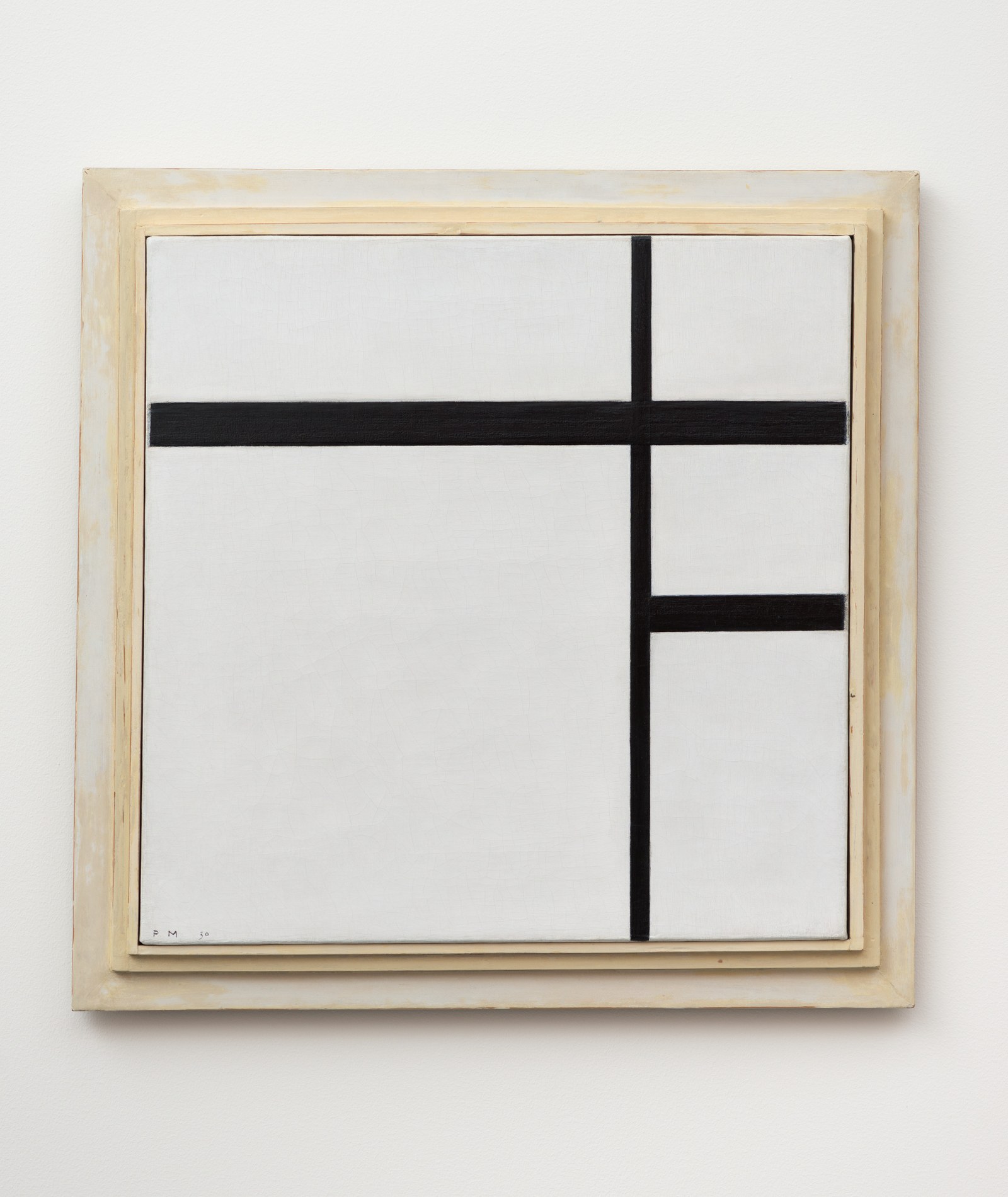Composition en blanc et noir II

Description
In 'Composition No. II' Mondrian divided a square canvas into five rectangular planes of different sizes using one vertical and two horizontal lines. The lines are black and have different widths. In most places, they run almost – but not quite – to the edge of the canvas. The planes have been painted white.
'Composition No. II' is one of Mondrian’s most austere works. Using only white and black and with no more than three lines, he constructed an asymmetrical but balanced image. As the lines, and therefore also the planes, vary in length and width and this variation was not achieved systematically but intuitively, it is still a lively painting despite the austerity. In 1911 Mondrian saw some of the Cubist paintings of Picasso and Braque at an exhibition in Amsterdam. He was struck by their attention to shape and the possibility of representing shapes from reality as more or less independent abstract forms. Mondrian was in Paris from 1912 to 1914, where his work was greatly influenced by Cubism. When he returned to the Netherlands his work became gradually more abstract until he completely liberated himself from realistic representation in 1917.
Mondrian’s ideas about abstract art corresponded with those of Theo van Doesburg who founded the journal De Stijl in 1917, with contributions from artists, architects and writers, looking for a new and abstract imagery. Mondrian wished to develop a universal style and endeavoured to do this by working with the elements of the very language of painting such as line, form, colour and rhythm. These elements were increasingly reduced to their essence, and by the beginning of the 1920s he was exclusively using straight lines running horizontally or vertically and right-angled corners as the elements which determined form. He limited his use of colour to the primary colours, red, yellow and blue and the non-colours black, white and grey. He created balanced and harmonious compositions using this easily comprehensible and universal imagery, which he described with the term “the new vision” or “Neo-Plasticism”.
![[object Object]](/en/collection/toneelmaquette-voor-lephemere-est-eternel-van-michel-seuphor/@@fallback-image/image/large)
![[object Object]](/en/collection/peter-townsend/@@fallback-image/image/large)
![[object Object]](/en/collection-research/library/publications/arthur-lehning-en-mondrian/@@fallback-image/image/large)
![[object Object]](/en/exhibitions/plug-in-en-en-en-en-en-en-en-en-en-en-en-en-en-en-en-en-en-en-en-en-en/@@fallback-image/image/large)